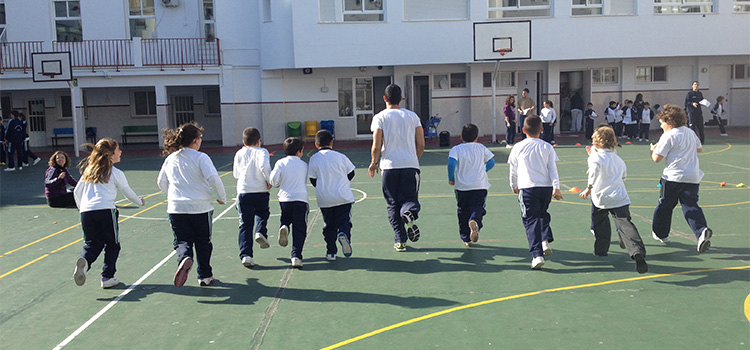Researchers from UCA prove that present and future cardiovascular health in children is determined by their level of aerobic capacity 29 November 2017
In December, the Mayo Clinic Proceedings journal will publish a study run by the CTS-158 Galeno group which shows new cut-off points to assess these aspects
Researchers from the CTS-158 GALENO group at the University of Cadiz, directed by professor José Castro Piñero, have been working for three years on an important multicentre study based on an analysis of the influence of physical activity on the development of cardiovascular disease, a study in which they have taken into account environmental, nutritional, emotional and genetic factors, among others. The main novelty of this study is the fact that the group of individuals analysed was made up of 230 children of between 6 and 10 years old, from 18 schools in the province of Cadiz.
In order to better understand the importance of this study and its results, it must be noted that up until now, various studies had been published in this sense on adults and adolescents but nothing on children of 6 to 10 years old. To this end, researchers from the University of Cadiz, together with the Autonomous University of Madrid, the Spanish National Research Council (CSIC) and the Complutense University of Madrid, have focused their efforts on drawing up aerobic capacity cut-off points that will help to determine the risk of suffering from cardiovascular disease in both girls and boys of between 6 and 10 years
old.
“Thanks to the enormous amount of information gathered over these three years, a series of cut-off points have been established which, in addition to helping us to define profiles, have enabled us to go one step further and prove, for example, that a six-year- old’s level of aerobic capacity determines his level of cardiovascular risk in two years’ time”, explains the coordinator of this project at the UCA, José Castro Piñero. Thus, researchers have observed “the level of aerobic capacity of a 6- to 10-year- old child will determine their risk of cardiovascular disease two years later”.
Among many other things, professor Castro Piñero’s team observed that “children that, in the first instance, had high levels of aerobic capacity, that is to say, were above the cut-off point, had a much healthier cardiovascular profile than those who were below this cut-off point. Therefore, the level of aerobic capacity of a subject at six years of age, subsequently determines cardiovascular risk”. Thus, “it is important to establish strategies or promote physical activity to improve our aerobic capacity as early as possible, and that right from when we are children, our level of aerobic capacity is determining our level of cardiovascular health”.
In addition to this, and always in the context of the UP&DOWN project, backed by the Spanish National Plan for Scientific and Technical Research and Innovation, researchers from the GALENO group also analysed what would happen if the child’s level of aerobic capacity changed. Thus, “we found that those children who maintained a high level of aerobic capacity, over the years that they were monitored, were those that had the best cardiovascular health. And those children who, over these two years, had a low level of aerobic capacity, were those with the worst cardiovascular profile”. Equally they saw that “when your level of aerobic capacity decreases, then your cardiovascular risk increases, that is to say, we must be aware that having a good level at six years old is not enough, we need to maintain this level.”.
Thus, and following the publication of this study under the title Cardiorespiratory fitness cut points for early detection of present and future cardiovascular risk in children: A two-year follow-up study in the prestigious Mayo Clinic Proceedings journal, the University of Cadiz recommends that an intervention protocol be established in schools and health centres to promote physical activity from an early age, focusing on improving aerobic capacity to protect future cardiovascular health.
Bibliographical reference: Castro Piñero, José; ……; (2017) Cardiorespiratory fitness cut points for early detection of present and future cardiovascular risk in children: A two-year follow-up study. Mayo Clinic Proceedings (DOI:…..)



